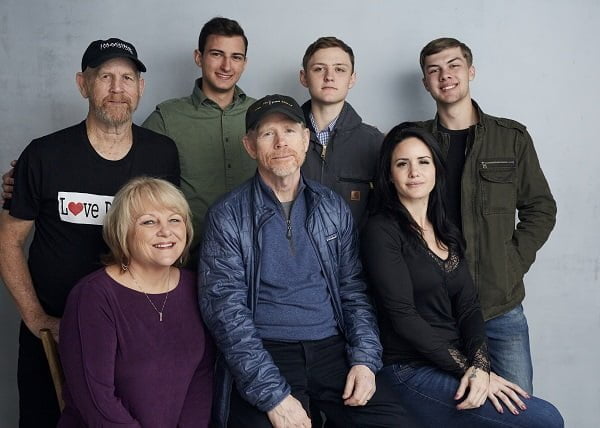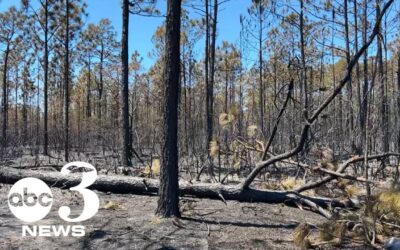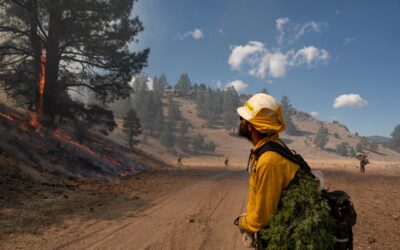“Rebuilding Paradise” largely evades a discussion of climate change

Steve (Woody) Culleton, from left, Bryson Groh, Zach Boston, Brandon Burke, Michelle John, from bottom right, director Ron Howard and Carly Jean Ingersoll pose for a portrait to promote the film “Rebuilding Paradise” at the Music Lodge during the Sundance Film Festival on Friday, Jan. 24, 2020, in Park City, Utah. (Photo by Taylor Jewell/Invision/AP)
By JAKE COYLE AP Film Writer
PARK CITY, Utah (AP) — Ron Howard knew Paradise, the northern California town devastated by the most destructive wildfire in California history.
His mother-in-law had lived there and he had visited the town. He had some understanding of its people. Ten days after what became known as the Camp Fire swept through Paradise, killing 85 people and destroying roughly 19,000 buildings, Howard went to see it.
“I’ve never seen anything like it,” he said.
A little over a year later, Howard came to the Sundance Film Festival to premiere “Rebuilding Paradise,” a documentary he directed about the aftermath of the Camp Fire, including the colossal cleanup and rebuilding efforts of the close-knit rural community.
“It’s the story of a community, not the story of a fire,” Howard said in an interview. “It’s a story of a very cruel test.”
It’s the third documentary in four years for Howard, following “The Beatles: Eight Days a Week” and “Pavarotti.” But “Rebuilding Paradise” was a more open-ended exercise.
“There was no thesis to prove,” Howard said. “It’s my first real vérité documentary where you go in with yourself and field producers and some cameras and you just start asking questions and see what the story’s going to be.”
That included getting close with the residents of Paradise, several of whom came to the Park City festival for the movie’s premiere. Steve “Woody” Culleton, a former mayor of Paradise who moved into his and his wife’s rebuilt home in December, said the film captured the small-town resilience of Paradise.
“A lot of people came into the town right after the disaster. We were exploited. We were exploited by the (Pacific Gas & Electric Corp., the now-bankrupt utility whose equipment started the fire) and the cleanup crews. We were exploited by the news media who left after a week,” Culleton said. “It wasn’t that way. Lizz Morhaim and Xan Parker, the producers, they spent the year with us. They were there.”
“Rebuilding Paradise” largely evades a discussion of climate change, focusing instead on the strain of rebuilding and the persistence of the town’s people. Howard was careful not to draw politics into the film.
“This is not about policy. If I wanted to make a movie about climate change, there’d be all kinds of charts and data and talking heads with statistics,” Howard said. “But I think we all sense that for whatever reason this is more likely to touch or lives either directly or through loved ones, these kinds of problems. So what does that mean? Then what?”
National Geographic will release “Rebuilding Paradise” later this year.
All contents © copyright 2020 The Associated Press. All rights reserved.



